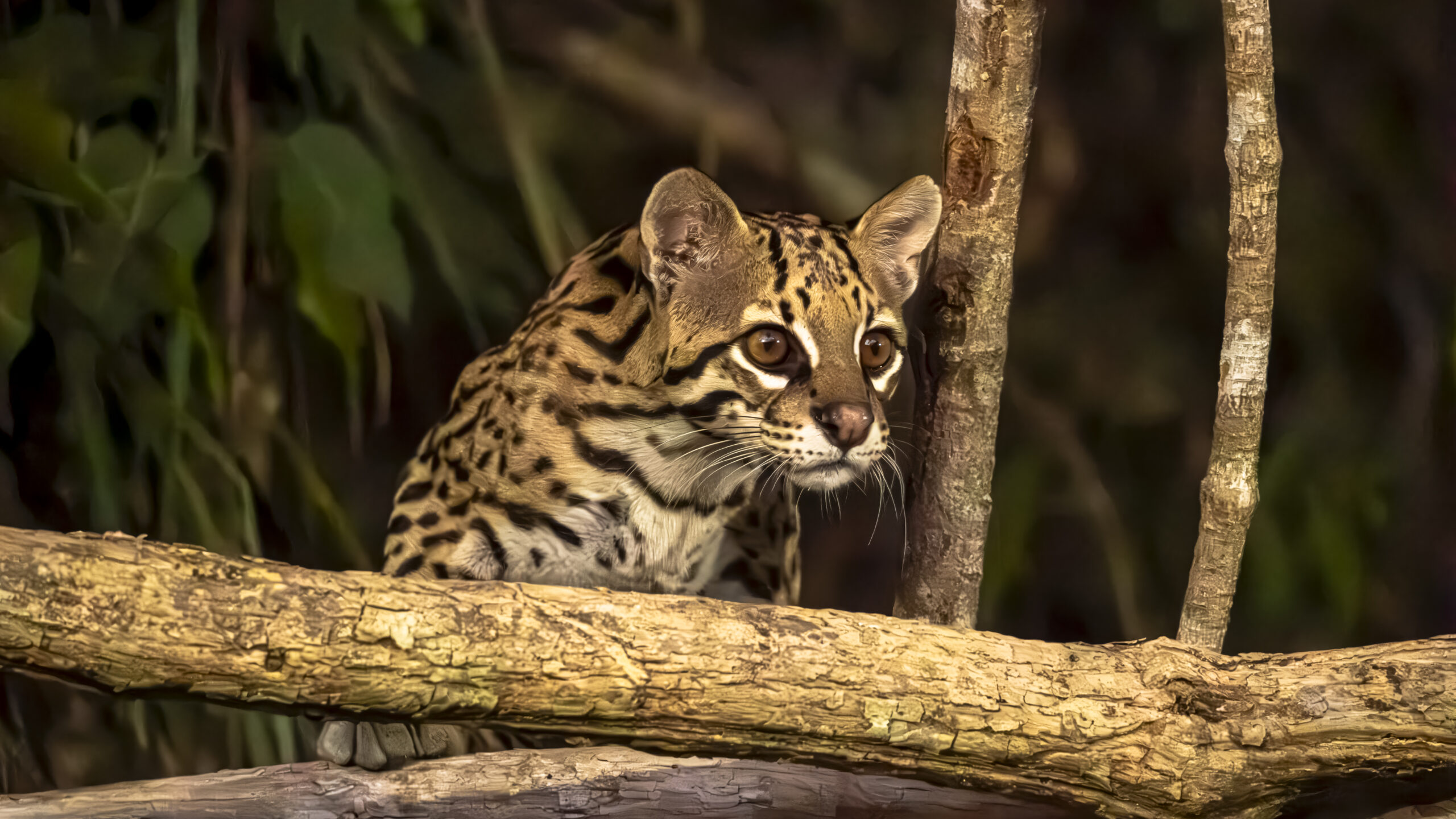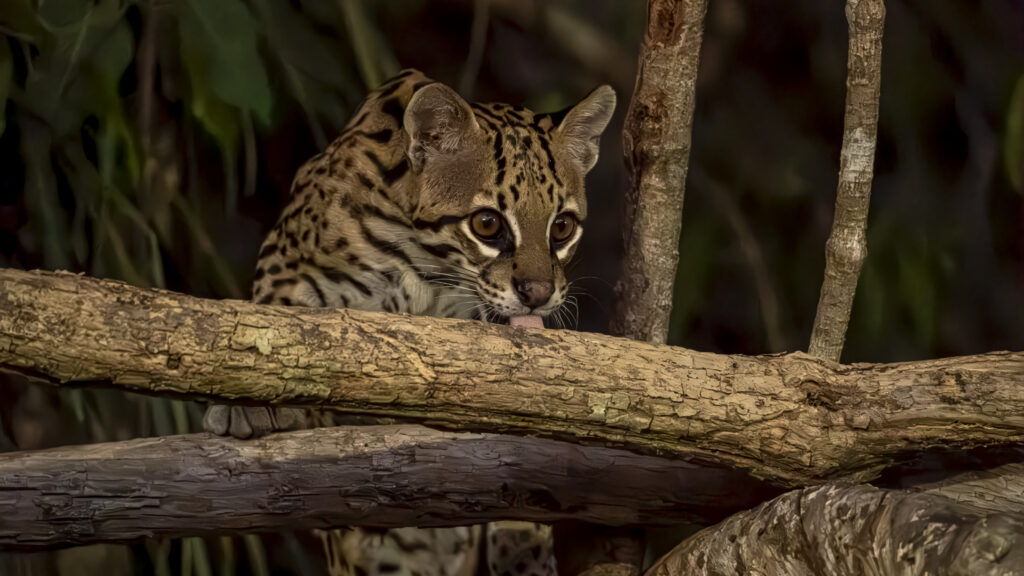
The genus Leopardus comes from the Latin Leo, meaning lion, and pardus, meaning panther or leopard, translating to “a leopard lion.” The epithet pardalis also derives from the Latin pardus and alis, a suffix meaning “belonging to”; that is, related to the leopard (Tirira, 2004).
Order: Carnivora | Family: Felidae
Scientific name: Leopardus pardalis
Common name: Cunaguaro, Ocelote
Conservation status: Least concern (LC)
Best season for ocelot: All year round
Description
This is a medium-sized species among felines, but the largest of the small spotted cats. Males are somewhat larger than females. The head is robust and rounded with a slightly convex muzzle. It has large eyes and short, rounded ears. The fur is short and soft, occasionally slightly coarse. The coloration of the fur varies from brownish-yellow to dull yellow, covered with well-defined black spots. On the back and flanks, some spots open in a rosette shape or appear as dark longitudinal lines, revealing a pale brown color inside. The neck features dorsal black bands. The ventral region is white with black spots. The back of the ears is dark with a central white spot.


Distribution
This species is found from the southern United States to northern Argentina and Uruguay, from lowlands up to 3,800 meters above sea level. In Colombia, the three registered subspecies are distributed as follows: Leopardus pardalis pseudopardalis in the Caribbean and the Orinoquia; Leopardus pardalis aequatorialis in the Pacific and the central Andes region; and Leopardus pardalis melanurus in the Amazon and the southeastern slope of the Andes.




Habitat
It is a terrestrial, solitary species with both diurnal and nocturnal habits. This opportunistic carnivore has certain prey preferences (Bisbal, 1986). It can hunt in trees but is primarily a ground-hunting specialist (Sunquist and Sunquist, 2009). Its diet mainly consists of small mammals and, to a lesser extent, large rodents, foxes, bats, birds, reptiles, and fish (Abreu et al., 2008).
*Source:https://bioweb.bio/faunaweb/mammaliaweb/FichaEspecie/Leopardus%20pardalis


